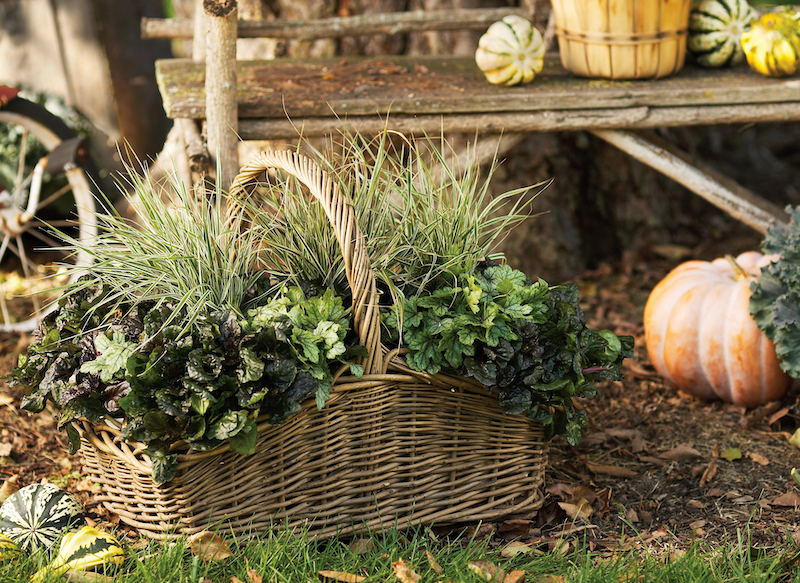A member of the mint family, Ajuga is a low-growing herbaceous perennial often used as a landscaping groundcover. Providing color and texture, this broadleaf’s showy foliage varies from bronzy purple to reddish-orange. The foliage stays evergreen, while violet bloom spikes appear in June, adding long-lasting interest to containers, with little maintenance required.
Ajuga’s showy but foul-tasting foliage is resistant to drought, deer, and several small critters, including rabbits, squirrels, and chipmunks. Its pollen, however, draws bees, butterflies, and hummingbirds. Use Ajuga in containers, including hanging baskets, to decorate decks, patios, entryways, and balconies.

Planting Ajuga in Pots
The best time to pot Ajuga is in the spring or early fall. Since Ajuga is a fast-growing perennial, select a pot with ample space, about two to four inches wider than the root ball. Ajuga thrives in moist, well-draining soil, so choose an unglazed ceramic pot containing at least one, preferably two to three drainage holes. After planting, place the container in a spot that receives part shade to full sun. Four hours of sunlight will enhance Ajuga’s variegated hues.
Best Soil For Ajuga in Pots
While tolerant of poor soil, Ajuga prefers slightly acidic, moist, well-drained soil enriched with organic matter. A typical potting mix will suffice, but if it lacks drainage, amend it with perlite. Do not add pebbles/rocks to the bottom of the container, as this will hinder drainage. To prevent soil loss during watering, you can place an unbleached coffee filter over the container’s drainage hole(s). To reduce moisture loss from evaporation, apply a one-inch layer of shredded bark or compost. Finally, prevent fungal disease by keeping Ajuga’s crown above the surface of the soil/mulch.
Caring For Ajuga in Planters
This lovely perennial requires minimal work even in a container. It is cold tolerant, drought tolerant at maturity, and a low feeder. Whether planted in a hanging basket or mixed arrangement, Ajuga will reward you with striking color and texture with little effort on your part.
Watering Ajuga in Pots
Until established, provide Ajuga with one to two inches of water per week. Once mature, reduce watering to one inch per week. Check the soil moisture before watering, and water when the top 1 to 2 inches of soil are dry. While relatively drought tolerant, Ajuga thrives in moderately moist soil. Saturated soil, however, should be avoided, as Ajuga is susceptible to crown rot.
Fertilizing Ajuga in Pots
While Ajuga is a light feeder, the nutrients in the potting soil will need to be replenished a few times a year. You can apply a layer of compost, a granular slow-release fertilizer, or a liquid fertilizer diluted to 50% of the label strength in spring and summer.
Winter Care For Ajuga in Pots
Depending on the variety, Ajuga is cold hardy in zones 3-8. In cold climates, protect glass, terra cotta, and ceramic containers by moving them to a frost-free location. With reduced sunlight hours in winter, Ajuga’s growth will slow and require less water than usual and no fertilizer.

Growing Ajuga Indoors
Ajuga can be grown outdoors and indoors. When grown indoors, Ajuga requires 6 hours of bright light to thrive. Provide an inch of water weekly during the spring, summer, and fall months; reduce watering in winter as growth slows.
 |
Author Suellen Barnes - Published 11-21-2023 |
